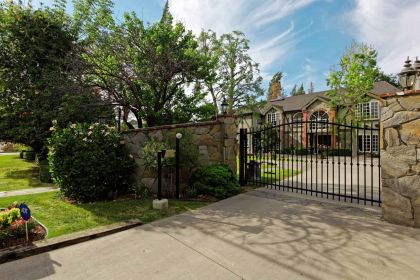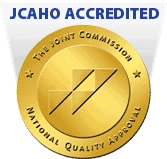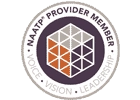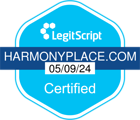How to Pay for Opioid Addiction Rehab Treatment in Greater Los Angeles, CA
At Harmony Place, you’ll find multiple rehab facilities throughout the greater Los Angeles area, all ready to support your journey through opioid addiction treatment. Each rehab location is fully equipped with the resources and compassionate care needed to help you reclaim your life. With expert teams dedicated to your recovery, you’ll receive personalized treatment programs to guide you toward lasting wellness.
At Harmony Place Rehab Center in Los Angeles, we’re committed to making our services accessible to everyone. That’s why we accept various insurance plans, offer flexible payment plans, and even base payments on a sliding scale if you find the need for financial assistance. If you’re unsure how to pay for opioid rehab without insurance, call us. We can also verify your insurance coverage.
What Is Opioid Use Disorder (OUD)?
Opioid use disorder (OUD) is a medical condition where a person becomes dependent on or addicted to opioids, which can include prescription pain medications or illicit drugs like heroin. This disorder is characterized by the inability to control opioid use despite harmful consequences.
OUD affects the brain’s reward system, making it difficult to quit without help. Symptoms include intense cravings, withdrawal symptoms, and continued use despite negative impacts on health, relationships, and responsibilities. Treatment options like therapy, medication-assisted treatment, and support groups can help individuals overcome OUD and regain control of their lives.
What Is a Private Opioid Addiction Treatment Program?
A private opioid addiction treatment program offers personalized, confidential care for those seeking recovery from opioid addiction. At Harmony Place Treatment Center, we provide both inpatient and outpatient opioid rehab programs, giving you flexibility based on your needs. Inpatient opioid rehab offers 24/7 support, while outpatient rehab allows you to maintain daily responsibilities while attending treatment sessions.
Are you wondering how to get into opioid rehab in Los Angeles? At Harmony Place Drug and Alcohol Addiction Treatment, we make the process simple and supportive. Whether you pick inpatient or outpatient care, our team will guide you through every step. We create treatment plans to address your specific challenges, helping you break free from addiction and reclaim your life in a safe and private environment.
Opioid Addiction Statistics in SoCal
In high-need areas like Skid Row in Los Angeles, there is a scarcity of opioid treatment centers despite high overdose rates, as noted by the Center for Health Journalism. Approximately 40% of commercial HMO and PPO members diagnosed with substance dependence received care that met national standards for timely initial treatment visits, according to the California Health Care Foundation.
As of March 29, 2019, California had 1,797 substance use treatment facilities serving nearly 97,000 clients, with only 144 offering opioid treatment programs, as reported by SAMHSA. Prescription opioids are involved in 45.2% of opioid overdose deaths in the state, with 2021 seeing 7,181 opioid overdose fatalities, accounting for 66% of all drug overdose deaths in California, according to KFF.
What Is the Value of Paying for a Private Opioid Addiction Treatment Program?

Paying for a private opioid addiction treatment program offers personalized care, privacy, and comprehensive support. Our programs at Harmony Place Treatment Center are tailored to your unique needs, with expert staff and a confidential environment. Investing in yourself ensures the best chance for long-term recovery, offering a renewed sense of purpose and well-being. Contact us at (855) 652-9048 to find out more.
Shorter Admission Wait Times for Opioid Addiction Treatment
At Harmony Place, you can expect shorter admission wait times so that you can start your detox for opioid addiction right away. We know how important it is to get help quickly, and we’re here to ensure you don’t have to wait. Every moment counts, and we’re ready to support you on your journey to recovery.
With faster access to treatment, you can jump into a tailored plan designed just for you, whether you’re looking for detox, inpatient, or outpatient care. The faster you start, the sooner you’ll reap the benefits of healing and transformation. Let’s take that next step together — you’ve got this.
Freedom in Selecting an Opioid Rehab Treatment Facility
Having the freedom to choose from various opioid rehabilitation programs allows you to tailor your recovery to your specific needs. At Harmony Place, we offer options that give you control over where and how you receive care. Our opioid recovery centers in Los Angeles provide inpatient and outpatient services, helping you find the perfect fit for your journey.
Selecting the right facility is crucial for your success. You take an empowered step toward lasting recovery by choosing the environment and program that aligns with your goals. Additionally, we offer flexible options for funding addiction treatment, allowing you access to the care you need without financial barriers holding you back.
Greater Privacy and Confidentiality for Opioid Addiction Treatment
Greater privacy and confidentiality in opioid addiction treatment are essential for your comfort and peace of mind. At Harmony Place, we prioritize your privacy throughout your recovery. Our opioid addiction therapy programs offer a secure, confidential environment where you can focus on healing without concerns about your personal information being shared.
This high level of confidentiality extends into every aspect of your care, from therapy sessions to relapse prevention for opioid addiction. By creating a private and supportive space, we ensure you can fully engage in your recovery, building the skills and confidence needed for lasting sobriety. Your well-being is our priority, and our focus on privacy helps you feel safe and empowered.
Access to Advanced Opioid Rehab Techniques and Therapies
At Harmony Place, you’ll have access to advanced opioid rehab techniques and therapies designed to give you the best chance for a successful recovery. We incorporate a range of proven methods, including 12-step programs for opioid addiction, medication-assisted treatment for opioid addiction, and dual diagnosis treatment for those facing co-occurring mental health conditions.
By combining these approaches, we address both the physical and emotional aspects of addiction. Medication-assisted treatment helps manage withdrawal symptoms, while 12-step programs offer peer support and structure. For those who also have mental health issues, our dual diagnosis treatment ensures you receive comprehensive care addressing all facets of your well-being. These advanced therapies give you the tools you need to build a foundation for long-term sobriety.
Ideal Staff-to-Patient Ratios for Opioid Treatment
At Harmony Place, we believe that ideal staff-to-patient ratios are essential to effective opioid treatment. With a balanced ratio, each patient receives the personalized care and attention they deserve. Our holistic opioid rehab programs are designed to address the whole person — mind, body, and spirit — ensuring you have the support needed for every aspect of recovery.
In our residential opioid rehab centers, a lower staff-to-patient ratio means more one-on-one time with medical professionals, therapists, and support staff. This allows us to provide personalized treatment, ensuring your journey is as individualized as possible. By maintaining this ideal ratio, we create an environment where you can focus on lasting recovery with the full attention of our expert team.
Personalized Opioid Addiction Treatment Plans
At Harmony Place, we understand that your journey is unique, and our personalized opioid addiction treatment plans reflect that. We believe in crafting tailored programs that address your needs, challenges, and goals. Whether you require detox, therapy, or ongoing opioid addiction recovery support, we ensure that your treatment plan is customized to offer the best path to success.
Our personalized approach includes a variety of evidence-based therapies, holistic care options, and relapse prevention strategies, all designed to meet your personal recovery needs. You’ll receive the tools necessary to achieve long-term sobriety with the right support. This individualized care empowers you to take control of your recovery, helping you stay motivated and confident throughout the entire process.
Comfortable Opioid Addiction Treatment Accommodations
At Harmony Place, your comfort is a priority during opioid addiction treatment. We offer serene, supportive environments where you can focus entirely on your recovery. From the opioid detoxification process to ongoing therapy, we provide comfortable accommodations and promote healing. For those transitioning out of intensive treatment, sober living homes offer a structured, safe space to continue your recovery.
Beyond your stay, we also offer comprehensive opioid addiction aftercare programs to support your long-term success. Whether you complete treatment at one of our centers or move into a sober living home, you’ll receive the care and support needed for a smooth transition. Comfort and care go hand in hand, helping you focus on building a solid foundation for your new life.
How Much Does Opioid Addiction Treatment Cost Without Health Insurance Coverage in Los Angeles, CA?
The cost of opioid addiction treatment without health insurance in greater Los Angeles varies, but adult residential programs typically cost around $9,766 per episode. This price can fluctuate based on the duration of stay and the level of care provided, but it offers a general idea of what to expect for inpatient treatment.
Exploring options like payment plans, sliding-scale fees, and financial aid for those without insurance can make treatment more affordable. Outpatient programs often provide a less expensive alternative, but it’s essential to consider the level of care you need to ensure successful recovery.
Ways to Pay for Opioid Addiction Treatment Programs Without Insurance Support
Finding ways to pay for opioid addiction treatment without insurance support can feel challenging, but there are several options to help. From payment plans to sliding-scale fees, many rehab centers offer flexible solutions. Exploring different avenues can make your recovery journey more accessible.
Fundraising via Crowdfunding and Local Community Efforts for Opioid Addiction Facilities
Crowdfunding has become an effective way to raise funds for rehab without insurance. Platforms like GoFundMe allow friends, family, and even strangers to contribute to your substance abuse recovery on a budget. Sharing your story and explaining your need for opioid addiction treatment can inspire others to support your journey, easing the financial burden.
Local community efforts are another fantastic way to raise funds. Many communities are willing to help people seeking recovery through church groups, local businesses, or nonprofit organizations. Hosting events like charity runs, bake sales, or community fundraisers can also generate financial support. These grassroots efforts can significantly affect your ability to access the treatment you need without straining your budget.
Payment Plans With Opioid Addiction Rehab
One of the most flexible options for managing the cost of opioid rehab is enrolling in a rehab payment plan. Many facilities in Los Angeles understand the financial challenges of treatment and offer payment plans to make recovery more affordable. These plans allow you to break the cost into manageable monthly payments, easing the burden of upfront expenses.
Wondering how to get help paying for opioid rehab in Los Angeles? Start by contacting treatment centers directly to ask about their payment plan options. Rehab facilities often have dedicated staff to guide you through how to pay and customize plans based on your financial situation. This ensures your recovery is within reach, even without immediate access to complete payment.
Pay for Opioid Addiction Programs With COBRA
The Consolidated Omnibus Budget Reconciliation Act (COBRA) is a valuable option for those who have recently lost their job but want to maintain their health insurance coverage. With COBRA, you can extend your employer-provided health benefits, which may include coverage for opioid addiction treatment. This can be a lifeline for figuring out how to pay for inpatient opioid rehab.
If you’re wondering how to pay for inpatient opioid rehab using COBRA, it’s essential to act quickly. You typically have 60 days to opt into COBRA after losing your job. Once enrolled, your insurance plan can help cover treatment costs, making recovery accessible even during job transitions.
Private Self-Pay Options for Opioid Addiction Rehab Programs
Private self-pay options offer flexibility for individuals seeking opioid addiction treatment without relying on insurance. Many rehab facilities provide alternative financing for rehab, allowing you to cover the costs directly. This option often comes with the benefit of more personalized care, as it avoids the restrictions sometimes imposed by insurance plans, giving you more control over your treatment choices.
If you’re looking into how to pay for opioid rehab without insurance, self-pay options may be a viable solution. Some centers offer sliding-scale fees or flexible payment arrangements to accommodate your financial situation. Additionally, private pay allows quicker access to treatment since you won’t need to navigate insurance approval processes, making it easier to start your recovery journey.
Sliding-Scale Fees with Opioid Addiction Treatment Center
Sliding-scale fees offer an excellent option for people seeking financial aid for substance abuse rehab. These fees are calculated based on your income and ability to pay, ensuring that treatment is accessible to a broader range of people. Many opioid addiction treatment centers use sliding-scale fees to make their services more affordable.
If you’re concerned about how to afford treatment, ask the center about their sliding scale fee options. This form of financial aid can significantly reduce the cost of rehab and make recovery possible for those facing financial challenges. By offering flexible payment solutions, these centers prioritize your health and well-being, ensuring that cost is not a barrier to receiving care.
Partner With Non-Profit Organizations and Get Scholarships for Opioid Addiction Treatment
Partnering with nonprofit organizations can open the door to scholarships for rehab programs, making addiction treatment more affordable. Many nonprofits are dedicated to helping individuals access the care they need, offering scholarships for rehab programs to ease the financial burden. These organizations often work directly with treatment centers to provide financial assistance.
Researching and applying for these scholarships can significantly benefit those seeking affordable addiction recovery. Some non-profits offer additional resources like counseling and community support to complement your treatment. By joining forces with these organizations, you gain access to high-quality care without worrying about how to cover the total cost of your opioid addiction treatment.
EAPs or Government Assistance Programs for Opioid Addiction Programs
Employee Assistance Programs (EAPs) and government assistance programs provide crucial support for individuals seeking opioid addiction treatment. EAPs, often offered through employers, can help cover the cost of rehab, offering resources like counseling and referrals. Additionally, government assistance for rehab, such as Medicaid or state-funded programs, can provide financial relief, making addiction recovery more accessible.
Non-profit addiction treatment support is another valuable resource, often providing grants for addiction treatment. These grants can help offset rehab costs, especially for those without insurance. Whether through government programs or non-profit organizations, there are multiple avenues to explore for financial aid, ensuring that cost is not a barrier to receiving the help you need for recovery.
Support from a Local Network of Family, Friends, and Community
Support from your local network of family, friends, and community can be a game-changer during opioid rehab, especially if you’re navigating the process without insurance. Emotional and financial support from those around you can make a difference, helping you stay committed to your recovery. Involving family therapy in opioid rehab can also strengthen these bonds.
Additionally, friends and community members can help with fundraisers, provide resources, or even assist with daily responsibilities, allowing you to focus entirely on your treatment. Whether you’re attending an opioid rehab without insurance or with limited coverage, the collective efforts of your support network can ease the financial and emotional strain, boosting your chances of long-term success.
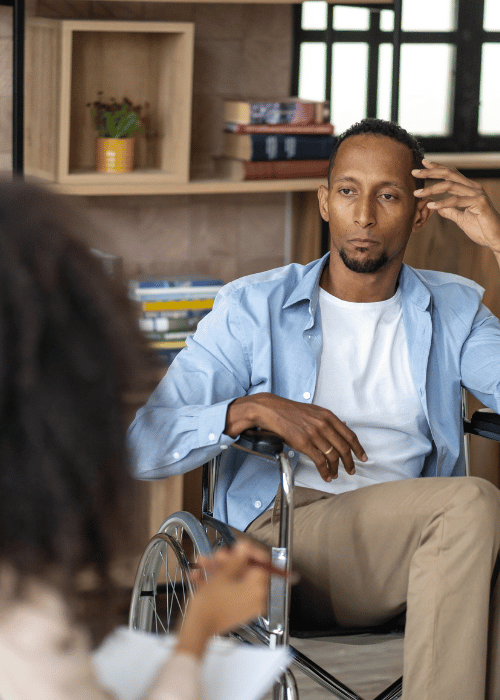
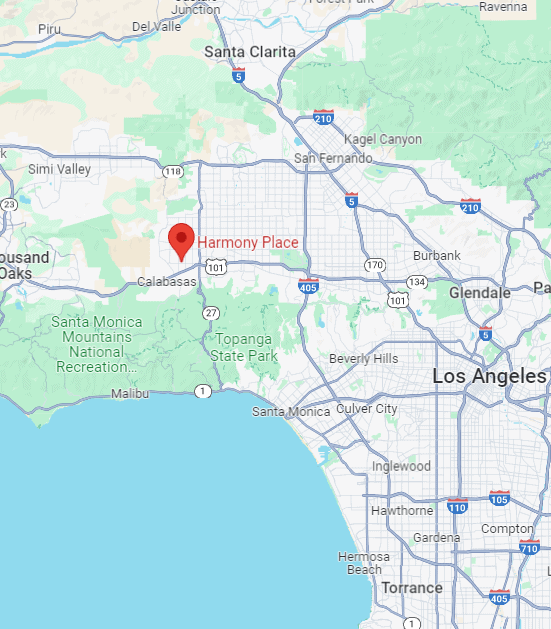
Private Opioid Addiction Treatment Centers in Los Angeles That Offer Payment Options
Private opioid addiction treatment centers in Los Angeles offer high-quality care with flexible payment options to make recovery accessible for everyone. Harmony Place’s facilities provide a variety of treatment levels, including inpatient and outpatient care, to help you achieve lasting recovery.
Our facilities accept a wide range of insurance plans, making it easier to focus on healing without financial stress. Harmony Place, 23041 Hatteras St., Woodland Hills, CA, offers residential treatment. Harmony Place East, 22913 Burbank Blvd., Woodland Hills, CA, also provides residential care. Valley Restoration Center is at 22900 Ventura Blvd, Ste. 314, Woodland Hills, CA, for outpatient services. Each location is committed to providing exceptional, personalized care.
How to Find an Opioid Addiction Treatment Program Near Los Angeles
Finding the perfect opioid addiction treatment program near Los Angeles doesn’t have to be overwhelming — in fact, it can be a positive step toward reclaiming your life. By following a few steps, you’ll be on your way to finding the program that works best for you.
- Check with Your Health Insurance Provider: Even if you consider paying privately, your health insurance might cover some treatment aspects. Ask your insurance company for a list of recommended opioid rehab centers in Los Angeles.
- Search Google Maps: Use Google Maps and type in terms like “opioid rehab center” or “private pay opioid rehab in Los Angeles.” You’ll quickly see rehab centers near you.
- Ask for Referrals: Contact healthcare professionals — your doctor, addiction counselor, or mental health provider. They often know reputable facilities they can recommend.
- Explore Local Resources: Check with LA community health organizations or addiction support groups. They often have valuable insights into private pay treatment centers.
- Review Facility Websites: Once you have a list of potential options, visit their websites. Look for information on treatment approaches, amenities, staff qualifications, and payment options. You want a center that offers individualized care and strong aftercare.
- Read Reviews and Testimonials: Learn from others’ experiences by reading reviews on Google, Yelp, or recovery-focused sites.
- Contact the Centers: Call or email your top choices. Ask about their treatment programs, costs, and payment plans to see if they align with your needs.
- Verify Licensing and Accreditation: Ensure the facility is licensed and accredited by reputable bodies like the Joint Commission or CARF to guarantee high standards of care.
- Schedule a Visit or Virtual Tour: Get a sense of the environment. Whether in-person or virtual, meet the staff, explore the facility, and ask any remaining questions. It’s all about finding the right environment for your recovery.
How to Get into an Opioid Rehab Treatment Center in Greater Los Angeles
Getting into an opioid rehab treatment center in greater Los Angeles involves several key steps, from identifying the suitable facility to navigating payment options and ensuring you meet the program’s requirements. Whether you’re seeking inpatient or outpatient care, choosing a program that fits your needs and offers the right support for long-term recovery is essential.
Recognize the Need for Opioid Rehab
Recognizing the need for opioid rehab is the first and most crucial step toward recovery. If you or a loved one are struggling with opioid use, signs such as an inability to stop using, withdrawal symptoms, or adverse effects on daily life, relationships, and health may indicate a need for professional treatment help.
Opioid addiction affects both the body and mind, making it difficult to quit without assistance. Once you recognize the need for rehab, you open the door to effective treatment options like detox, therapy, and long-term support. Seeking help is a courageous and necessary step toward regaining control and rebuilding your life.
Research Available Opioid Treatment Programs and Consult with Professionals
Researching available opioid treatment programs is an essential step in finding the right path to recovery. Start by exploring different types of treatment, such as inpatient, outpatient, and medication-assisted programs. Each offers varying levels of support, so it’s essential to pick one that fits your needs.
Consulting with healthcare professionals, like doctors or addiction specialists, is equally important. They can provide valuable guidance on which programs might be most effective based on your medical history and the severity of your addiction. A professional assessment ensures you choose a treatment plan tailored to your needs, increasing the likelihood of successful, long-term recovery.
Assess Various Payment Options for Opioid Treatment
Assessing various payment options for opioid treatment is a crucial part of planning your recovery journey. Many rehab centers offer different ways to cover costs, such as sliding-scale fees, payment plans, and financial aid. These options allow you to break down the costs into manageable payments, making it easier to access the care without the entire financial burden upfront.
Additionally, exploring alternative funding methods like scholarships, grants, or community support can further reduce your financial strain. Some facilities may also accept private pay or assist with navigating insurance coverage if available. By thoroughly evaluating all your options, you can ensure that financial concerns don’t stand in the way of receiving the opioid treatment necessary for a successful recovery.
Contact Opioid Programs and Complete the Intake Process
Once you’ve identified potential opioid treatment programs, contact them directly and begin the intake process. Contact the rehab centers to inquire about their services, availability, and any specific requirements for admission. This is also the time to ask about payment options and confirm whether they offer financial aid or support for those without insurance.
After choosing the right program, you’ll need to complete the intake process, which usually includes an assessment of your medical history, substance use, and any co-occurring cognitive health issues. This evaluation helps your treatment team develop a plan tailored to your needs. Completing the intake process is a significant step toward starting your recovery journey and receiving the care you deserve.
Prepare for Opioid Addiction Rehab and Enter Detox (If Required)
Preparing for opioid addiction rehab is a step that sets the foundation for your recovery. Start by organizing personal matters, such as work, family, or finances, to ensure you can focus entirely on your treatment. It’s helpful to mentally prepare for the journey, knowing that while rehab can be challenging, it’s a crucial step toward a healthier, drug-free life.
If medical detox is required, this will likely be the first stage of your rehab experience. Detox helps with withdrawal symptoms in a safe, controlled environment with medical supervision. While it can be physically and emotionally demanding, completing detox is essential to clear your body of opioids and prepare you for the next phases of therapy and long-term recovery support.
Engage in the Opioid Treatment Process
Engaging fully in the opioid treatment process is vital for a successful recovery. Participate actively in both group therapy for opioid recovery and individual counseling for opioid misuse. Group therapy allows you to connect with others with similar experiences, while individual counseling helps you address personal challenges. Together, these therapies provide a comprehensive approach to building long-term sobriety.
In addition to therapy, treatment often includes holistic activities like mindfulness and physical wellness, complementing recovery. Engaging in these supportive services helps you create a healthier lifestyle that fosters ongoing sobriety. By staying committed and focused, each step of your journey brings you closer to lasting recovery and freedom from opioid addiction.
Prepare for Aftercare; Develop a Course of Action Plan With Support Team
Preparing for aftercare is a crucial part of maintaining long-term recovery after completing opioid rehab. Before leaving treatment, work closely with your support team to develop a personalized course of action that includes ongoing care. This plan may involve continued individual counseling for opioid misuse, participation in group therapy for opioid recovery, and regular check-ins with your care providers.
Your aftercare plan should include relapse prevention strategies, healthy coping mechanisms, and support systems such as sober living homes or community groups. Collaborating with your support team will create a solid foundation to help you navigate life after treatment and maintain sobriety. A clear course of action ensures you can handle challenges and continue your journey toward lasting recovery.
Request a 100% Confidential Callback
- How to Pay for Rehab Without Insurance
- How to Pay for Alcohol Rehab Los Angeles
- Ways to Pay for Drug Rehab
- Payment Methods for Dual Diagnosis
- How to Pay for IOP Los Angeles
- Ways to Pay for PHP Rehab
- How to Pay for Cocaine Addiction Rehab
- How to Pay for Fentanyl Rehab California
- Ways to Pay for Opioid Rehab LA
- How to Pay for Detox Los Angeles
- How to Pay for Inpatient Los Angeles
- How Much Does Rehab Cost in LA?
- Cost of Addiction Therapy
- Cost of Addiction Treatment
- Cost of Drug and Alcohol Aftercare
- Cost of Drug and Alcohol Detox
- Cost of Drug and Alcohol Intensive Outpatient
- Cost of Drug and Alcohol Outpatient
- Cost of Drug and Alcohol Partial Hospitalization
- Cost of Drug and Alcohol Residential Inpatient
- Cost of Dual Diagnosis Treatment
- Cost of Sober Living
- Cost of Treatment
Statistics and Information on Paying for Private Opioid Addiction Treatment in Los Angeles, CA
- In some high-need areas of Los Angeles, like Skid Row, there are few opioid treatment centers despite high overdose rates, according to the Center for Health Journalism.
- Around 40% of commercial HMO and PPO health plan members diagnosed with alcohol or drug dependence received care that met the national quality standard of having an initial treatment visit within 14 days of diagnosis, according to the California Health Care Foundation.
- As of March 29, 2019, there were 1,797 substance use treatment facilities in California serving 96,960 clients; 144 offered opioid treatment programs, SAMHSA reported.
- Prescription opioids play a role in 45.2% of opioid overdose deaths in California, according to the National Center for Drug Abuse Statistics.
- In 2021, California recorded 7,181 opioid overdose deaths, representing 66% of all drug overdose fatalities in the state, KFF reported.












